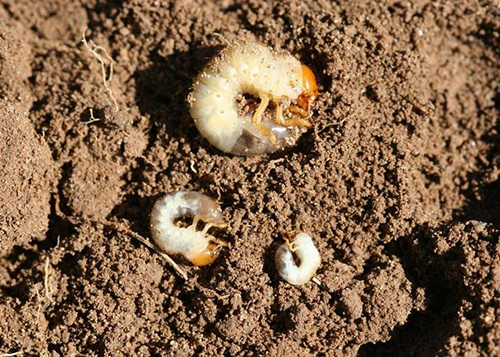Integrated Pest Management
May/June Beetles
Phyllophaga spp.
Pest Description
- adults: 1/2 – 1 inch long and vary in color from light to dark brown to reddish brown
- larvae: 1/8 – 1 inch long; c-shaped; cream colored; grayish rear end; yellow-brown head with three pairs of legs
Host Plants, Diet & Damage
- adults feed on foliage of broadleaf plants and conifers
- larvae feed on the roots of grasses, trees and shrubs
- larvae chew on roots, leaving turf yellow and brown
- severe root damage leaves turf with a spongy feel and turf that peels away easily from soil when tugged
- secondary damage can occur when animals, such as birds, dig up turf in search of white grubs
- adult damage is seen as holes in foliage
Biology, Life Cycle & Damaging Life Stage
- overwinter as mid- to late-stage larvae in the soil or as newly emerged
- adults that remain in the soil until spring
- adults emerge late spring into summer to feed and mate, and deposit spherical, white eggs in the soil
- larvae initially feed on organic matter before feeding on roots; second year larvae cause most damage
- larvae move deeper in the soil in the fall to hibernate
- some species have a 2 to 3-year life cycle
- larval stages are damaging to turf
IPM Recommendations
- Maintain healthy plants using proper cultural practices.
- Monitor by sampling soil to search for larval stages.
- Apply a biopesticide containing entomopathogenic nematodes or Beauveria fungal spores for suppression.
- Apply a preventive insecticide (neonicotinoid; anthranilic diamide) in spring.




